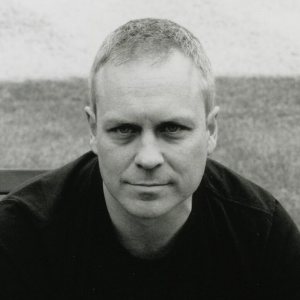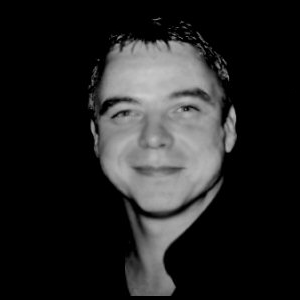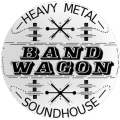History of the Soundhouse
"Let there be rock"
As AC/DC once - almost - sang, “In the beginning, back in 1975...” a walrus-moustached, long-haired DJ brought his collection of rock records to the backroom of the Prince Of Wales pub in Kingsbury, and the Soundhouse was born. Known as ‘The Bandwagon,’ a disco-cum-night club stuck to the side of a less than exotic drinking establishment on the outskirts of North West London, the club opened in the early '70s. But it wasn't until the middle of the decade that the Wagon became known for rock music.
Over time, the resident DJs started throwing in the odd Deep Purple number alongside Rose Royce and The Fatback Band tunes during the regular disco sets. Meanwhile, the club’s resident Sunday night band Bethnal played Led Zeppelin and Who covers alongside their own material. In 1975 realising - cue deep voice - "The Power Of Rock", three DJs John, Paul and Steve decided to host an experimental ‘rock night’. And, as a banner adorning the back bar of the Bandwagon announced, "London's Only Heavy Rock Disco" was born.
Although the Bandwagon's interior was designed to resemble that of a wild west town, complete with barrels as makeshift tables, a mock-up saloon bar and even a cantina, it wasn't until the sheriff Neal Kay rode into town that the real story started.
"Man didn't know about a rock 'n' roll show"
Although the club had been staging rock nights before Neal's arrival, they lacked any presentation or real foresight. One evening in 1975 DJ Steve Bubb put out a plea to anyone wanting to spin a few discs to apply... to the stage. In The Bandwagon that night was West End DJ Neal Kay who offered his services. With his larger-than- life personality, passionate knowledge of rock (gained from working on the Berlin nightclub scene) and humungous moustache, there could be no better choice.
As well as a one-night-a-week slot, Neal took over the coveted Sunday night residency which became the most popular night of the week, with 500 plus attendees and lock-outs becoming common place.
"All across the land every rockin' band was blowin' up a storm"
With its word-of-mouth reputation spreading, "London's Only Heavy Rock Disco" began taking place five times a week, and "The Wagon" was soon pulling a denim-clad crowd from all over London, drawn to the sounds of Black Sabbath, Led Zeppelin, Rush and Thin Lizzy. Neal Kay's Heavy Metal Soundhouse became a serious alternative to punk and new wave venues, such as The Roxy. The Wagon also began to stage gigs by newer, allegedly younger hard rock bands, including Samson, Angelwitch, Praying Mantis, Nutz and, er, Saxon (though carbon dating of a hair sample later proved Saxon's lead singer Biff Byford was prehistoric even then).
Iron Maiden, a band who were already gaining a name for themselves playing pubs in their native East End, sent Neal their four-track demo to play. While Neal resembled a relic from the ‘60s, he had his finger on the pulse of heavy metal. Maiden were soon fiercely championed by Neal and the Wagon regulars, and the band even titled their debut EP, The Soundhouse Tapes. The now legendary EP's cover features photos taken while on stage at The Bandwagon preserving another Soundhouse legacy.
"And the guitar man got famous"
"I suppose the most important thing was the demo tape was being played at the Soundhouse by Neal Kay, because that was the thing that started people getting interested in the band. We did a four-track demo and then we gave it to Neal Kay and he started playing it at his Soundhouse and people started voting for it as their favourite tracks or whatever, and we started getting into these Sounds charts which were compiled by requests there, and stuff like that. So that's really what got the ball rolling , we all had a bit of a buzz about us, so that really was the first break... It was with Neal Kay" - Steve Harris (Iron Maiden)
By 1979 the club had attracted TV crews, rounded up regulars to appear in music videos for Judas Priest and Pete Townshend and as extras in the movie Quadrophenia. Meanwhile, Sunday afternoon TV was invaded by an hour-long documentary, 20th Century Box, which tried to explain to a frightened nation, this thing called "heavy metal", leading to a trip down the Wagon, and an interview with Neal and the club's celebrity headbanger, Rob "Loonhouse" Yeatman, along these lines...
Danny Baker (interviewer): "Do you think that this headbanging thing could be a career for you?"
Rob Loonhouse: "Well, yeah it could be, it's basically what I'm good at." Ask a silly question, etc.
The programme was later reprised in the late '90s on comedian Bob Mills's late-night TV show In Bed With Me Dinner - though perhaps Bob missed the irony.
"The music was good and the music was loud"
Elsewhere, the club was attracting the attention of the music and national press. The former showing up to report on the phenomenon that was taking place on the music scene with The Bandwagon at its epicentre and to witness the, erm, Headbanging Band Of The Year; and the latter, to spread hysteria about the dangers of shaking the head to loud music.
The Soundhouse also went out on the road to spread the word and with Neal leading the charge "The Heavy Metal Crusade" brought the likes of Saxon and Iron Maiden to the masses on tours covering the length and breadth of the country. Meanwhile, Sounds magazine took to regularly printing the Soundhouse's Heavy Metal Chart based on requests at the club. The Chart became a definitive guide. Top tunes of the day: AC/DC - Let There Be Rock, Styx - Queen Of Spades, Montrose Space Station No 5.
Soundhouse fashion accessories of the day: Three-button T-shirt and flared jeans slung low enough for the ragged cuffs to soak up any spilled puddles of Worthington E.
"There were fifteen million fingers learnin' how to play"
Who can forget the Wagon's great cast of characters? AC/DC fanatic "Superloon", complete with schoolboy uniform going berserk to Highway To Hell, and then showing his hairy arse as a finale; Rob Loonhouse, whose carefully crafted cardboard (Sorry Rob - hardboard) guitar became the country's most famous headbanger when asked to join Iron Maiden on tour becoming their unofficial sixth member. Alex "Quo" Laney beating Neal into submission just to play Caroline... and the many other characters that made up what Neal described as “the Soundhouse Nation”.
A heavy metal Mecca (the place of worship, not the bingo hall), no self-respecting hard rock band could play a gig in London without enjoying the sights, sounds and smells of Kingsbury.
Celebrity visitors included... Motorhead, Ted Nugent, Sammy Hagar, April Wine, Rainbow and Judas Priest (whose singer Rob Halford once gamely walked into the Prince Of Wales's public bar, clad head to toe in leather, and ordered a large orange juice).
In 1979, Neal helped compile Metal For Muthas, a compilation of new metal bands (now seen as a cult - I think that's spelt right- classic), and was soon warming up the crowds as metal-DJ-in-residence at The Music Machine, where, on one of the Soundhouse band nights, the term "New Wave Of British Heavy Metal" was coined by the music press.
There was no escaping Neal. The White Hart (Now The Redback Tavern, until it burned down last year) in Acton also housed the Soundhouse for a time, including its most bizarre evening: The Soundhouse Christmas Party... in May.





